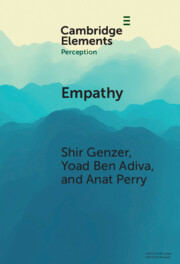Element contents
Empathy
Published online by Cambridge University Press: 05 December 2023
Summary
- Type
- Element
- Information
- Series: Elements in PerceptionOnline ISBN: 9781009281072Publisher: Cambridge University PressPrint publication: 21 December 2023
References
- 6
- Cited by

